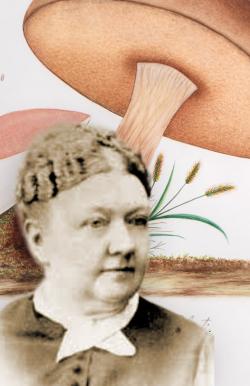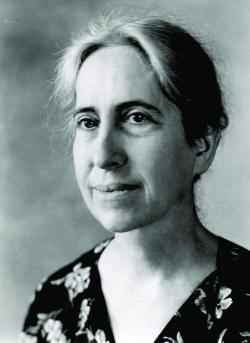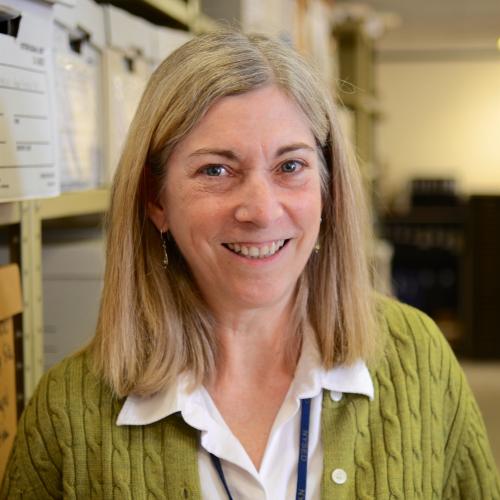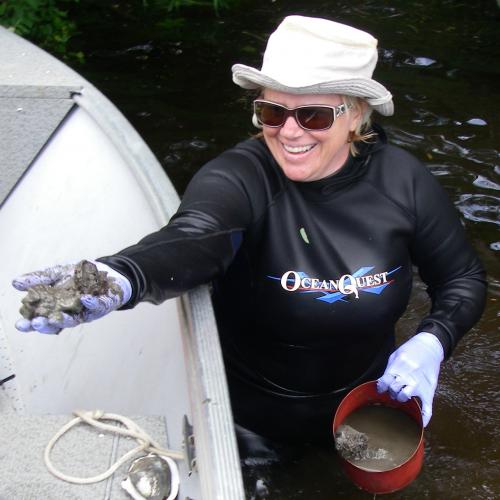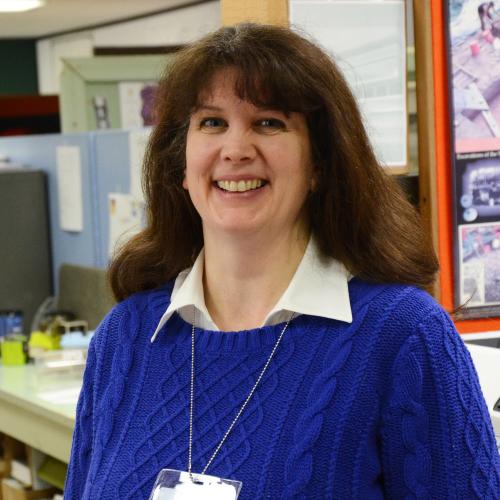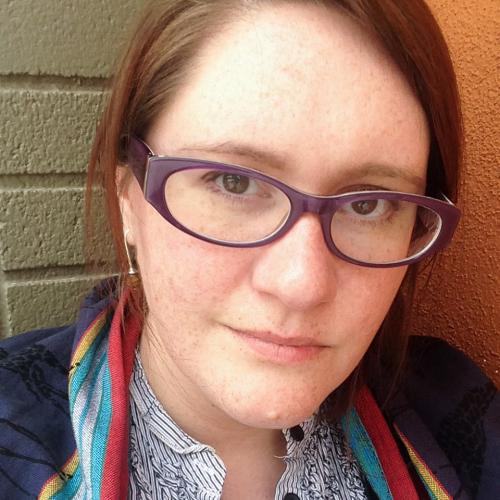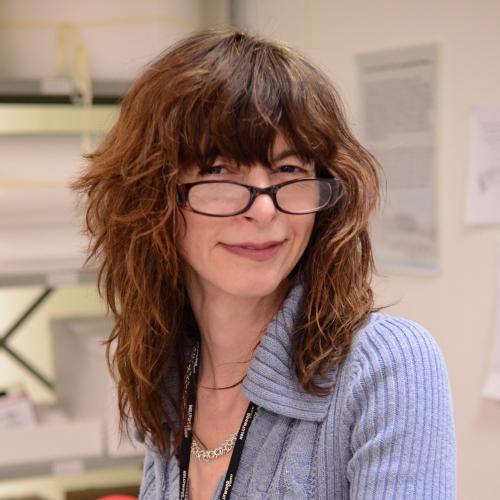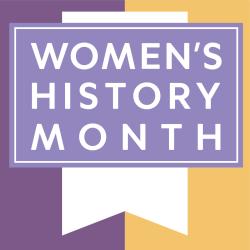The New York State Museum presents its annual Women of Science program. Learn about current and past NYSM scientists and their research through online presentations.
Women of Science at the New York State Museum
Women of Science in the Spotlight:
Beyond "Polite Botany": The Legacy of Mary Banning and Women in Early Mycological Research
Mary Elizabeth Banning (1822–1903) was a self-taught amateur mycologist who created one of the most comprehensive manuscripts about fungi in Maryland in the late 1800s. However, because she was a women, her work remained unrecognized for almost 100 years. Learn more about her life's research and how women used the study of "polite botany" to make a name for themselves in the natural sciences.
Mary Banning: The Fungi of Maryland Watercolors
Winifred Goldring (1888-1971)
Discover more about the world's first woman State Paleontologist and the significant contributions she made to the fields of geology, paleontology, and paleobotany throughout her 40-year career at the New York State Museum.
From extensive research on the Devonian crinoids of New York and the development of the ground-breaking Gilboa Forest exhibit to over fifty research articles and publications, much of Goldring's pioneering body of work is featured here for you to explore!
Winifred Goldring (1888-1971) - NYSM Scientist & State Paleontologist
Women of Science Video Library
Take a deep dive into the science happening at the New York State Museum! The videos below will help introduce you to the variety of exciting and cutting edge work conducted by the museum's female scientists.
The Science of Being Human: What is Cultural Anthropology and What is it Doing in a Museum?
Using Geographic Data to Map, Analyze, and Interpret Archaeological Sites
Women of Science: The Amazing Freshwater Mussel!
Women of Science: Fossils in the Field with Dr. Lisa Amati, Sarita Morse, and Kathleen Bonk
Women of Science: Underwater Archaeology with Dr. Daria Merwin
Women of Science: Cultural Resource Survey Program (CRSP) with Dr. Christina Reith
Women of Science: Non-Destructive Archaeological Surveys, Susan Winchell-Sweeney & Kristin O’Connell
Women of Science: Preserving Geologic History and Records with Kathleen Bonk
Meet the Scientists
Dr. Lisa Amati
Job: Invertebrate Paleontologist
Collection: Invertebrate Paleontology
Title: State Paleontologist
I am an invertebrate paleontologist specializing in ancient marine animals called trilobites. I mainly study how they lived and how the many different forms are related to each other. Most of my trilobites are between 450 and 500 million years old. Scientists study ancient animals like these to learn about how changes in climate affected animals in the past. We can apply this knowledge to help protect living things while the climate is changing today.
Lisa Anderson
Job: Bioarchaeologist
Collection: Bioarchaeology
Title: Curator of Bioarchaeology and Native American Graves Protection and Repatriation Act (NAGPRA) Coordinator
I study and curate a collection of human skeletal material from archaeological sites that date from over 4000 years ago to the 1800s. Bones tell a unique story about a person’s life, so my research focuses on the impact of different ways of life on the health and well-being of people in the past. I’ve been fortunate to work on a number of projects, from the impact of maize agriculture on the health of pre-contact Native Americans to a study of enslaved Africans in colonial Albany. We also assist other institutions and law enforcement with the identification and documentation of bones when they are found.
Kathleen Bonk
Job: Geologic Open File Geologist
Collection: Geology
Title: Collections Technician, Geologic Open File
As a museum collections technician of the Open File collection it is my responsibility to preserve and organize many of the one-of-a-kind and unpublished materials produced by geologists and their research from across New York State. The Open File collection consists of maps, journals, theses, reports, and other information than cannot be found anywhere else. My focus is on preserving these invaluable materials so that they can be used in future research. Some of the items in the Open File collection date back to the late 1800s and contain important data that cannot be collected again today because our landscape has changed since they were written.
Heather Clark
Job: Archaeologist
Collection: Cultural Resource Survey Program (CRSP)
Title: Principal Investigator/GIS and CAD Specialist
In my dual roles as both a principal investigator and as the GIS/CAD specialist for the Cultural Resource Survey Program (CRSP), I get to do my own research in addition to working with the geographic data colleagues use in their own investigations.
As the GIS/CAD specialist, I create, document, edit, and process georeferenced data from myriad sources to help interpret and document archaeological sites. My work at the Museum has developed my love of New York State history, particularly early colonial domestic sites.
Dr. Denise Mayer
Job: Freshwater Ecologist
Collection: Malacology
Title: Museum Scientist and Collections Manager for Malacology
As a freshwater ecologist, I search New York’s lakes and streams to find and count mollusks (mussels and snails) and share my findings and knowledge with the public, school groups, teachers, and scientists. The most important part of my job is teaching people about how fragile and important the animals that depend on freshwater ecosystems are and about their relationship with and services they provide to humans. One goal of my research is to prevent the destruction of native mussels by human impact, like pollution, dredging, dams, and the introduction of invasive species. My favorite part of my job is SC
Dr. Daria Merwin
Job: Archaeologist
Collection: CRSP
Title: Co-Director of the New York State Museum Cultural Resource Survey Program (CRSP)
I work with the Cultural Resource Survey Program, which is an applied research program of the Museum’s Research & Collections Division that provides research and assessment of archaeological and architectural resources for other state agencies. This extensive program assists these agencies with their state and federal historic preservation mandates. The CRSP is the largest outside-funded Museum program and employs about one-sixth of the Research & Collections Division’s staff.
Most of my career as an archaeologist has been spent in New York State, and I have worked on a wide variety of sites here, ranging from a small camp marked by chips left over from making a stone tool thousands of years ago to trenches dug by soldiers training to fight for America in World War I.
My main research interests focus on underwater archaeology and the study of maritime cultural landscapes to learn about how people in the past lived on and near the water. As a scientist, I love the process of discovery and then putting together all the clues we find in the field, in the lab, and even in the library to explain how the people who came before us might have lived. I also enjoy the challenge of solving problems, something I get to do regularly at the Cultural Resource Survey Program.
Sarita Morse
Job: Anthropologist
Collection: Archeology
Title: Archeology Technician
One and a half million years ago, a group of our ancestors walked along the shores of Lake Turkana in Kenya. Their footprints in the mud were quickly covered by sediment, preserving them. Uncovered in 2007 by evolutionary anthropologists, the prints began to erode quickly, and removing them for transport was deemed too risky. With the help of a retrofitted medical laser scanner, a generator, and patience, the prints are now recorded in high-resolution and available to scientists around the world to examine at their computers. For 5 years I traveled the world, scanning footprints of our distant and recent ancestors. This created a data set that could be analyzed to determine geological and biological factors and understand how they affect footprint formation and preservation.
In 2015 I was diagnosed with Multiple Sclerosis, ending my field career. Turning my fall into a dive, I now work in the CRSP archaeological laboratory here at the New York State Museum.
Kristin O’Connell
Job: Archaeologist
Collection: Historical Archaeology Research and Collections Technician
Title: Historical Archaeology Technician
As a historical archaeology technician, I prepare historic artifacts for storage, exhibit, and research. I participate in field excavation projects with both the prehistoric and historic curators of archaeology, and have worked at dozens of archaeological sites, ranging in age from thousands of years ago to the early 20th century. In addition to field excavation and artifact identification and analysis, my research interest lies in artifact conservation (how to stabilize and preserve artifacts that are in danger of deterioration). Archaeological conservation uses chemistry to understand how and why an artifact will deteriorate after it has been excavated and then finds the best treatment methods so historic data will not be lost. The coolest thing I’ve ever done is excavate a portion of a 18th-century fort that was discovered at Schoharie Crossing State Historic Site after a devastating hurricane hit the area.
Dr. Christina Rieth
Job: Archaeologist
Collection: Anthropology
Title: State Archaeologist in Archaeology at the New York State Museum and Co-Director CRSP
I currently work on the Early Late Prehistoric Period of New York (ca. AD 700–1400) and analyze prehistoric ceramics and their relationship to trade, exchange, and interaction in the Northeast. I have always been enamored with history and how we understand the past. By studying objects from our past, we can learn not only how lifeways have changed through time, but we gain insights into the future.
I am interested in both archaeology and chemistry, I decided to look at the archaeometry of ceramics and lithic (rock) materials.
Julie Weatherwax
Job: Bioarchaeologist
Collection: Bioarchaeology Lab
Title: Bioarchaeology Technician
I work in the Bioarchaeology Lab, documenting and analyzing human remains. This includes photographing specimens and assessing age, sex, and any pathology (disease or injury) the person might have had. I also take measurements to collect data to learn not only about the individual, but also about the population as a whole. I became an osteologist (someone who studies bones) after going on an archaeological dig in Poland, where we excavated Medieval burials. I found it fascinating how much you can learn about a person’s life from examining their skeleton.
My favorite thing about my job is getting to look at bones all day and seeing all the variations in the human body. My work is important because, based on what I learn from bones, I get to reveal part of a person’s life story that would otherwise not be told.
Susan Winchell-Sweeney
Job: Archaeologist
Collection: Anthropology Department
Title: Archaeological Research and Collections Technician, Certified Geographic Information Systems Professional (GISP)
I prepare collections for storage, exhibit, and research; participate in field excavations; and am the resident expert in Geographic Information Systems (GIS). Instruments like GPS (global positioning systems), GPR (ground-penetrating radar), magnetic susceptibility, and drones aid in mapping archaeological sites and can allow archaeologists to “see beneath the soil” without digging. I support the research projects of our curators, who have very diverse interests—there’s roughly a 13,000-year difference in the ages of the sites and artifacts they study!
The coolest thing I’ve ever done—and the most the evocative of a tragic time in the past—was assisting in the discovery and excavation of a French and Indian War-era smallpox hospital, the first in North America.

Women's History Resources
Discover educational resources, videos, and more focused on trailblazing women from New York State!



